INTO OUR WINES
Champagne!
Champagne, classic sparkling wine named for the site of its origin and exclusive production, the traditional region of Champagne in northeastern France. The term champagne is also applied generically, with restrictions, outside France, to many white or rosé wines that are characterized by effervescence. In the United States, sparkling wines made in a similar manner are designated first by place of origin, as in New York state champagne. Similar wines from Spain and elsewhere are often called “champagne-style.”
The region that produces champagne includes certain parishes in the départements of Marne, Aisne, Seine-et-Marne, Aube, and Haute-Marne. The best champagne comes from vineyards along the Marne River from Château-Thierry eastward to Épernay and on the plain from Épernay stretching north to Reims, which is dominated by a hill called the Montagne de Reims.
Champagne is made from only three grapes: pinot and meunier, both black, and chardonnay, white. Characteristic of champagne is a crisp, flinty taste, sometimes ascribed to the chalky soil. A small amount made from green grapes only is called blanc des blancs. Pink champagne (rosé) is made by adding a little red wine, or by leaving the crushed grapes in contact with their skins for a time.
Champagne is initially fermented in stainless steel vats, after which the wine is blended. If the year has been excellent, only wines of that year are used and the product is vintage champagne; if not, a blend with wines of different years will be made, improving and strengthening the wine and producing a nonvintage champagne.
After blending, a mixture of wine, sugar, and yeast is added to the wine before it is transferred to pressure tanks or to strong, dark bottles for a second fermentation that yields carbon dioxide and effervescence. This second fermentation is completed after a few weeks or months. Wine thus fermented in tanks is then transferred to another tank, where it is chilled, sweetened, and bottled. Wine in bottles is left to mature; during this period the bottles are shaken daily and gradually turned and tipped until they are upside down and the impurities (sediment) have settled onto the bottom of the cork. This procedure, called riddling, or remuage, has been largely mechanized since the 1970s. When the wine is mature and ready for the market, the deposits are removed in a process called dégorgement. In this process, the cork is carefully pried off, allowing the internal pressure in the bottle to shoot the sediment out; this is sometimes done after the neck of the bottle and the deposits have been frozen. After dégorgement, a small amount of syrup melted in old champagne is added to the bottle and the wine is recorked. Champagne to which little or none of this sugar is added is labeled brut, or extra dry; somewhat sweeter is sec, and wine with larger quantities is demi-sec. All of these are sweeter than the words indicate.
Champagnes on Martin’s Wine List are all very high quality. Let’s look at each of them to have an idea of how to suggest and sell them during service. Some of these are exclusive and highly prized vintage champagnes, some of the rarest on Earth. Others are a bit more commercial but still of a high caliber.
OUR CHAMPAGNE LIST
SALON ‘CUVEE S’ ’07, ’06, ’04, ’08 (1.5L) $1,200-9,990

VINTAGE
Le Mesnil-sur-Oger
Salon is one of the most prestigious houses in Champagne. Instead of making a range of styles that includes a prestige cuvée like most Champagne houses, Salon makes a single prestige cuvée, which is made entirely from Chardonnay from the village Le Mesnil-sur-Oger.
The house was founded in 1911 by Eugène-Aimé Salon, who thought that Champagne was overly dominated by heavy Pinot Noir. Consequently, Salon decided to make a top Chardonnay-based label instead.
Today Salon is made in only the best vintages. The wine comes from a one-hectare (2.5 acre) parcel owned by Salon and 19 smaller parcels cultivated through agreements with various growers in the Grand Cru-classified Le Mesnil.
This Champagne is one of the rarest and most sought after in the world.
Tasting notes:
‘08
After an initial floral-scented, fruit-driven nose, fresh menthol notes invade the glass. Remarkable power and generosity on the palate, and yet the mouthfeel is crystalline and perfectly balanced. A compelling mix of complexity and elegance. The finish is long and pure. Has the potential to stay the distance for 50 years.
‘07
Such an impressive wine for the detail in every respect. The nose delivers fresh lemon and grapefruit peel, together with white, stony minerals and very, very fresh and light pastry notes. Some grilled hazelnuts, too. The palate is super fine, supple and crisp with attractive, dry, salty minerals on the finish that holds super long, fine and focused. Elegant citrus and light brioche to close.
‘06
No doubting the pedigree or provenance, this opens with wet chalk and oyster shell notes, and there are aromas of dried yellow flowers and white mushrooms, white chocolate and lemon citrus as well as a refined array of fresh pastry. The palate has power with ripe lemon-drenched peach fruits. This is generous and gives plenty for Salon at this young stage with really succulent fruit. Builds white almond biscuit and toasted spices through the finish.
‘04
2004 Salon weaves together immense complexity with stunning purity and makes instant impact on the nose with fresh-baked pastry and brioche, chalky minerals, fresh white mushroom, cucumber, lemon curd and striking lemon and lime citrus fruits. The palate has an almost smoky mineral thread, toasty autolytic flavors build and expand through the mid-palate, opening to grapefruit and ripe white peach flavours, lemon sorbet and very lightly grilled hazelnuts to close. This is an impressively layered Blanc de Blancs in which bright acidity supports the flavorsome, concentrated and fleshy texture in seamless balance. A great Salon, very composed and complex in every respect, a classically styled vintage in which this legendary Champagne has excelled. It will be a fascinatingly complex Champagne with further age.
PERRIER-JOUET ‘BELLE EPOQUE’ ’04, ’13 $455-580

VINTAGE
EPERNAY
Perrier-Jouët is a Champagne producer based in the Épernay region of Champagne. The house was founded in 1811 by Pierre-Nicolas Perrier and Rose Adélaide Jouët, and produces both vintage and non-vintage cuvee, approximately 3,000,000 bottles annually, with its prestige label named Belle Epoque.[1]
Perrier-Jouët owns 266 acres of vineyards in the Champagne region.[2] Today the house is under the Pernod Ricard umbrella of brands.[3] Perrier-Jouët owns over 160 acres of vineyards, with more than half in the Grand Crus of Cramant and Avize.[4]
Henri Gallice and his younger brother Octave were both art lovers, but while Henri managed the family business in Épernay, Octave spent much of this time in Paris, sharing in the excitement of the “Belle Epoque” those heady years at the start of the 20th century when France was swept along by whirlwind progress in science and arts. In the capital, he met Emile Gallé, one of the pioneers of the Art Nouveau movement, the revolutionary artistic expression of the period. At the brother’s request, Emile Gallé created a design for Maison Perrier-Jouët, drawing on his own passion for botany to imagine a spray of Japanese white anemones. Four magnums enamelled with this delicate motif were delivered in 1902, becoming the iconic emblem, not only of the prestigious Perrier-Jouët Belle Epoque cuvée, but of Maison Perrier-Jouët itself.[12]
Tasting notes:
‘04
Vivid gold. Intense aromas of dried citrus fruits and pear, with deeper peach and honey nuances gaining strength in the glass. Deeply pitched and chewy in texture, offering broad orchard and pit fruit flavors and a hint of bitter citrus zest. Finishes with very good length and energy, leaving buttered toast and lees notes behind. This Champagne seems to be approaching its drinking window
‘13
Perrier-Jouët’s newly released 2013 Brut Belle Epoque is a giving, demonstrative wine that bursts from the glass with scents of mirabelle plum, confit citrus, buttery pastry and white flowers. Medium to full-bodied, pillowy and charming, it’s seamless and elegant, with a pinpoint mousse and a fleshy core of fruit that’s amplified by enough dosage to be noticeable. A touch finer-boned than the similarly successful 2012, it constitutes another fine effort from this house.
MOET & CHANDON ‘DOM PERIGNON’ ‘08 $480

VINTAGE
EPERNAY
Dom Pérignon
Dom Pérignon (1638–1715) was a monk and cellar master at the Benedictine abbey in Hautvillers. He pioneered a number of winemaking techniques around 1670—being the first to blend grapes in such a way as to improve the quality of wines, balance one element with another in order to make a better whole, and deal with a number of their imperfections; perfecting the art of producing clear white wines from black grapes by clever manipulation of the presses; enhancing the tendency of Champagne wines to retain their natural sugar in order to naturally induce secondary fermentation in the spring; being a master at deciding when to bottle these wines in order to capture the bubble. He also introduced corks (instead of wood), which were fastened to bottles with hemp string soaked in oil in order to keep the wines fresh and sparkling, and used thicker glass in order to strengthen the bottles (which were prone to explode at that time).[2] The development of sparkling wines as the main style of production in Champagne occurred progressively in the 19th century, more than a century after Dom Pérignon’s death. Dom Pérignon is always a vintage champagne, meaning that all grapes used to make the wine were harvested in the same year. The wine is not made in weak years, i.e. when the general quality of the harvest is considered to be too low.
Tasting notes:
‘08
The 2008 Dom Pérignon is the first time the estate has released a wine out of order (the 2009 was released before the 2008) but the estate loved the wine so much they felt it warranted additional aging. This is a rich, powerful wine that still shows incredible purity and elegance, with a stacked, concentrated feel on the palate. It’s rare to find such a mix of ripe, pure, concentrated fruit paired with this level of purity, focus, and precision. This is a legendary Dom that surpasses all the great vintages of Dom I have experience with, including the 1990, 1996, and 2002.
VEUVE CLICQUOT ‘LA GRANDE DAME ‘10 $460
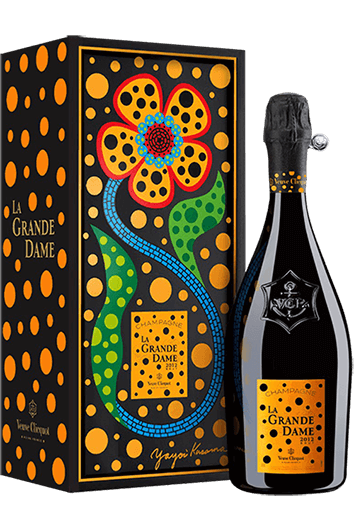
VINTAGE
REIMS
Madame Clicquot, née Barbe-Nicole Ponsardin, Widow Clicquot or Veuve Clicquot (16 December 1777 – 29 July 1866), known as the “Grande Dame of Champagne”,[1] was a French Champagne producer. She took on her husband’s wine business when widowed at 27. Under her ownership, and her skill with wine, the company developed early champagne using a novel technique. The brand and company of Veuve Clicquot Ponsardin still bears her name.
Veuve Clicquot Ponsardin is a Champagne house founded in 1772 and based in Reims. It is one of the largest[2] Champagne houses. Madame Clicquot is credited with major breakthroughs, creating the first known vintage champagne in 1810, and inventing the riddling table process to clarify champagne in 1816. In 1818, she invented the first known blended rosé champagne[9] by blending still red and white wines,[10] a process still used by the majority of champagne producers.
Tasting notes:
‘10
Fine and graceful, this dances across the palate with its bright, well-defined freshness and detailed flavors of Mandarin orange, toast point, crème de cassis and minerally oyster shell. Subtle in its intensity, with all the pieces seamlessly knit into an elegant whole. With a slight preponderance of Pinot Noir in the blend, this wine is rich and impressive. It is still young, with a crisp edge that makes the fruit shine.
RARE PIPER HEIDSECK ‘MILLISEME’ ‘08 $550
VINTAGE
REIMS
Piper-Heidsieck is a Champagne house founded by Florens-Louis Heidsieck on 16 July 1785 in Reims.[1] Heidsieck joined with Piper in October 1839. In the late 1980s, Piper-Heidsieck became part of the Rémy Cointreau wine and spirits group.[2] It was sold in 2011 to Européenne de Participation Industrielle, a privately owned holding company of French luxury brands.[3]
Marilyn Monroe was one of the House’s earliest supporters, rumoured to have kept a month’s supply of champagne in her kitchen.[4]
Produced only in the most exceptional vintages this 2008 Rare is a blend of 8 crus including Oger, Villers-Marmery and Avize for Chardonnay and Verzy for the Pinot Noirs, matured over 8 years in the Heidsieck cellars. Bearing witness to a sun-filled year, Rare Millésime 2008 glows with an iridescent yellow-green gold. 70% Chardonnay – 30% Pinot Noir.
TASTING NOTES:
‘08
Like a stallion out of the gate, this shows an initial explosion of power, in the form of mouthwatering flavors and fine texture, before quickly settling into an elegant gait. The racy acidity is seamlessly knit, buoying the lacy mousse and flavors of cassis, toasted brioche and tangerine, with accents of candied ginger, hazelnut and fleur de sel lingering on the long, creamy finish.
RARE PIPER HEIDSECK ‘MILLISEME’ ‘08 $1,250

VINTAGE ROSÉ
REIMS
Piper-Heidsieck is a Champagne house founded by Florens-Louis Heidsieck on 16 July 1785 in Reims.[1] Heidsieck joined with Piper in October 1839. In the late 1980s, Piper-Heidsieck became part of the Rémy Cointreau wine and spirits group.[2] It was sold in 2011 to Européenne de Participation Industrielle, a privately owned holding company of French luxury brands.[3]
Marilyn Monroe was one of the House’s earliest supporters, rumoured to have kept a month’s supply of champagne in her kitchen.[4]
The 2008 Rare Rosé is Piper-Heidsieck’s second ever prestige cuvée rosé. This extremely premium and rare offering has been 11 years in the making. The legendary eye of Régis Camus saw a rare opportunity in the 2008 champagne vintage, a beautifully complex and eccentric vintage. It is an audacious wine, born of intuition, vision and aspiration – the very definition of Rosé.
TASTING NOTES
‘08
Unwinding in the glass with a youthfully shy nose featuring white cherries, blood orange, Meyer lemon, honeysuckle and dried white flowers that offers the promise of considerable complexity to come. On the palate, the wine is medium to full-bodied, racy and tight-knit, with good concentration, beautifully integrated acids and a fine mousse, concluding with a long, delicate finish.
BILLECART SALMON ‘CUVEE ELISABETH’ ’08 $580
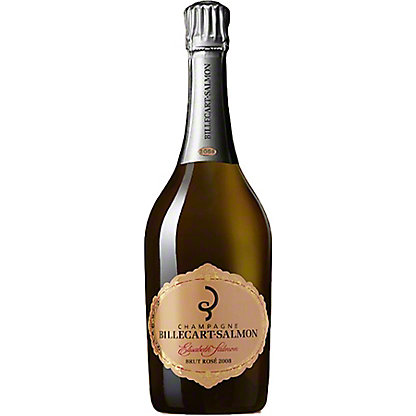
VINTAGE ROSÉ
EPERNAY
Chardonnay, Pinot Noir and Meunier, all carefully cultivated, harvested, worked and blended by the veritable artists of the Billecart-Salmon House, create a range of great champagnes that are renowned amongst connoisseurs from around the world. The flagship of the brand, Champagne Brut Rosé, has been brought up to date by Jean Roland-Billecart in the 1970s, and made the Billecart-Salmon name famous worldwide: its manufacturing secrets and winemaking method perfectly reflect the Billecart-Salmon style.
In its constant quest for excellence, Billecart-Salmon favours cultivation methods that aim to protect the environment and promote biodiversity. Committed to preserving the cycle between winemaker and nature, the House has long been convinced that such a course of action is essential in the pursuit of environmental sustainability. The House’s philosophy is simple: respect the terroir in order to produce great wines. Long before being certified High Environmental Value and Sustainable Viticulture in Champagne in 2017, Maison Billecart-Salmon was already focused on managing its vineyards with the utmost respect for the environment. Beyond a simple approach, it’s a long-term state of mind that calls for constant self-assessment and continuous progress.
TASTING NOTES
‘08
The 2008 Brut Rosé Cuvée Elisabeth Salmon explodes from the glass with a mesmerizing array of aromas, flavors and textures. Blood orange, cinnamon, mint and dried flowers. The 2008 is incredibly young, but it is also incredibly tempting. Patience will be rewarded. In the meantime, readers might enjoy adding a few bottles of the stellar 2007 to their cellars, as the nervy, taut 2008 needs time. The 2008 is 55% Pinot Noir (from Aÿ, Verzy, Verzenay and Mareuil) and 45% Chardonnay (from Chouilly, Avize and Cramant), with 9% still wine from Mareuil. It is the first vintage that includes a portion of wines (17%) done in barrel and the first vintage in which the magnums were aged on the cork rather than on crown seal.
PERRIER JOUET ‘BELLE EPOQUE’ ’10 (1.5L) $2,200
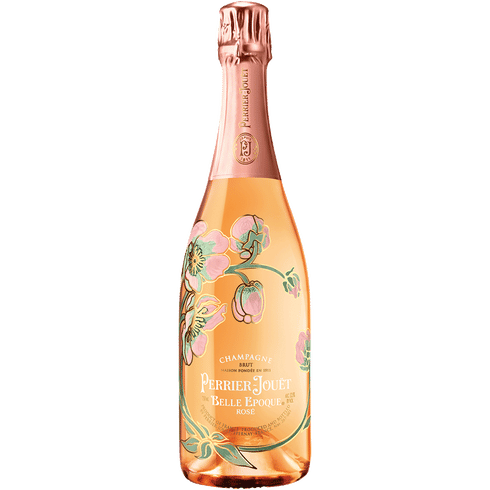
VINTAGE ROSÉ
EPERNAY
Perrier-Jouët is a Champagne producer based in the Épernay region of Champagne. The house was founded in 1811 by Pierre-Nicolas Perrier and Rose Adélaide Jouët, and produces both vintage and non-vintage cuvee, approximately 3,000,000 bottles annually, with its prestige label named Belle Epoque.[1]
Perrier-Jouët owns 266 acres of vineyards in the Champagne region.[2] Today the house is under the Pernod Ricard umbrella of brands.[3] Perrier-Jouët owns over 160 acres of vineyards, with more than half in the Grand Crus of Cramant and Avize.[4]
True to the free spirit of Maison Perrier-Jouët, Perrier-Jouët Belle Époque Rosé is a resolutely original champagne which combines rarity with the ability to surprise. First created in 1978, it is crafted only in exceptional years and produced in extremely limited quantities.
TASTING NOTES
‘10
On the eye: A shimmering, pastel-toned, salmon-pink with luminous orange highlights.
On the nose: Aromas of strawberry and peony with the tartness of kumquat and white currant.
On the palate: Notes of pink grapefruit and mandarin combined with the generosity of brioche.
VEUVE CLICQUOT ‘YELLOW LABEL’ $110

NONVINTAGE BRUT
REIMS
Veuve Clicquot Ponsardin (French pronunciation: [vœv kliko pɔ̃saʁdɛ̃]) is a Champagne house founded in 1772 and based in Reims. It is one of the largest[2] Champagne houses.[3][4] Madame Clicquot is credited with major breakthroughs, creating the first known vintage champagne in 1810, and inventing the riddling table process to clarify champagne in 1816.[5][4][6][3][7][8] In 1818, she invented the first known blended rosé champagne[9] by blending still red and white wines,[10] a process still used by the majority of champagne producers.
During the Napoleonic Wars, Madame Clicquot made strides in establishing her wine in royal courts throughout Europe, notably that of Imperial Russia.[10] She played an important role in establishing Champagne as a favored drink of high society and nobility throughout Europe.
The house has borne its distinctive gold-yellow label since the late 19th century.[11]
The company was purchased in 1986 by Louis Vuitton (now part of the LVMH group formed in 1987)[12][13] and continues to expand worldwide.
TASTING NOTES
Toasty and generous with lemon freshness, this also has quite some dried-pear and peach aromas from mature elements of the blend, plus a touch of spice at the long, structured finish.
RUINART ‘BLANC DE BLANCS’ $200

NONVINTAGE BRUT
REIMS
Ruinart (pronounced [ʁɥinaːʁ]) is the oldest established Champagne house, exclusively producing champagne since 1729. Founded by Nicolas Ruinart in the Champagne region in the city of Reims, the house is today owned by LVMH Moët Hennessy Louis Vuitton SA.
Of the prestige cuvées, Dom Ruinart is a blanc de blancs, i.e. made entirely of Chardonnay, and was first released with the 1959 vintage. The Dom Ruinart Rosé, first released in 1962, resembles the Dom Ruinart Blanc de Blancs with the addition of 16% vinified red Pinot noir.[3] Ruinart Blanc de Blancs is the flagship of Maison Ruinart.
Ruinart’s cellars, acquired in 1768, are amongst the largest in the region, and are Gallo-Roman in origin. Like most Champagne cellars, they are the product of ancient chalk mining, and extend 38 metres below the ground and are 8 km long. The chalk helps to keep the cellars at a constant 11 degrees Celsius. The chalk pits were classified as a historic monument in 1931. The Ruinart taste is greatly dependent on the aging in chalk pits: three to four years for non-vintages, and nine to 10 years on average for a vintage Ruinart.
The Ruinart bottle is inspired by the first champagne bottles of the 18th century.
TASTING NOTES
“Crisp with a delicious line of acidity and ripe with apple and lemon flavors, this wine balances freshness with hints of maturity from aging in Ruinart’s subterranean cellars. It’s both taut with the tension of cool-climate Chardonnay & showing signs of toastiness.”
PIPER HEIDSIECK

NONVINTAGE BRUT
REIMS
$75 REGULAR BOTTLE (750ML) AND $50 HALF BOTTLE (375ML)
Piper-Heidsieck is a Champagne house founded by Florens-Louis Heidsieck on 16 July 1785 in Reims.[1] Heidsieck joined with Piper in October 1839. In the late 1980s, Piper-Heidsieck became part of the Rémy Cointreau wine and spirits group.[2] It was sold in 2011 to Européenne de Participation Industrielle, a privately owned holding company of French luxury brands.[3]
Piper-Heidsieck produces different champagnes, all with a non-malolactic, low-dosage method:[2]
- Cuvée Brut (non-vintage) (Composition: 55% Pinot Noir, 15% Chardonnay, 30% Pinot Meunier.)
- Rosé Sauvage (non-vintage) (Composition: 45% Pinot noir, 15% Chardonnay, 40% Pinot Meunier)
- Cuvée Sublime (non-vintage) A demi-sec champagne. (Composition: 55% Pinot noir, 15% Chardonnay, 30% Pinot Meunier)
- Brut (Vintage 2006) (vintage) A special release from a year considered exceptional by Piper-Heidsieck. (Composition: Pinot Noir, Chardonnay.)
- Cuvée Rare (vintage 2002) (Composition: 30% Pinot noir, 70% Chardonnay.)
Owning no vineyards of their own, Piper-Heidsieck sources grapes from 60 vineyards in the Champagne region, and produces around five million bottles of champagne a year.[citation needed]
TASTING NOTES
A bright and lively Champagne, with citrusy acidity enlivening rich hints of crème de cassis, toasted almond and crystallized honey. Accents of minerally smoke and saline linger on the creamy finish.
GOSSET 12 ANS EN CAVE (12 YEARS IN CAVE MINIMUM) $290
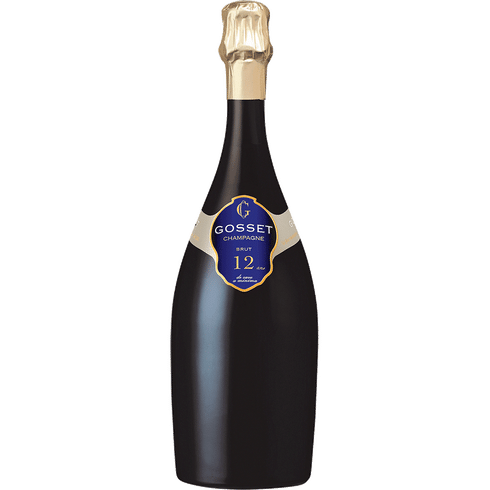
NONVINTAGE BRUT
CHAMPAGNE
Gosset, founded in 1584, is the oldest wine house in Champagne. In 1584, Pierre Gosset, alderman of Aÿ and wine-grower, made still, mostly red, wines from the grapes he harvested from his own vines. In those days, two wines vied for pride of place at the table to the Kings of France: the wine of Aÿ and, from some hundreds of leagues further South, the wine of Beaune. Then, in the 18th century the wine made in around Aÿ began to bubble and the Gosset family turned naturally to the production of champagne.[1]
This wine is aged for a minimum of 12 years in the wine cave after bottling, allowing it to fully develop into a very flavorful champagne.
TASTING NOTES
Rich flavors of pastry cream, lemon curd and glazed apricot glide across the satiny palate of this fine and creamy Champagne, offering a firm, finely-integrated spine of citrusy acidity providing balance and definition. Long and aromatic on the finish, with accents of graphite, chalk and saffron. Pinot Noir and Chardonnay.
GOSSET BLANC DE NOIRS $280
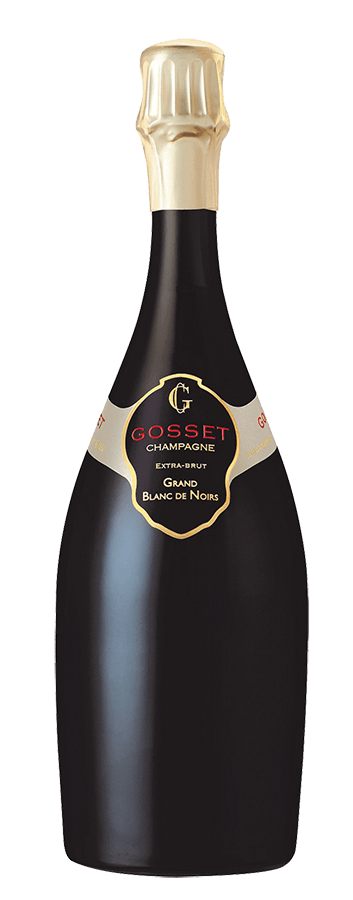
NONVINTAGE BRUT
CHAMPAGNE
This 100% Pinot Noir Champagne has been aged for over 9 years on the lees and is sourced mostly from the Aÿ Grand Cru, with some fruit also coming from Ambonnay, Chigny-les-Roses, Tauxieres, and Verzy. Like all the Gosset champagnes, it has not undergone malolactic fermentation or seen any barrel fermentation. It is dosed at 5 grams per liter of sugar, and comes across as a dry brut style, not an aggressive extra brut.
TASTING NOTES
A harmonious Champagne, with a satiny mousse, this shows good length and focus to the rich notes of baked plum and apricot fruit, biscuit, smoke and lemon curd. A firm frame of well-cut acidity lends balance. The long and ultra-bright finish is what makes this wine truly great, as it has the kind of swell that one usually only finds in fine Burgundy, and the cut that only the chalkiest sites in Champagne can deliver. If a splurge is in the budget, don’t miss this one.
KRUG ‘GRAND CUVEE’ $400
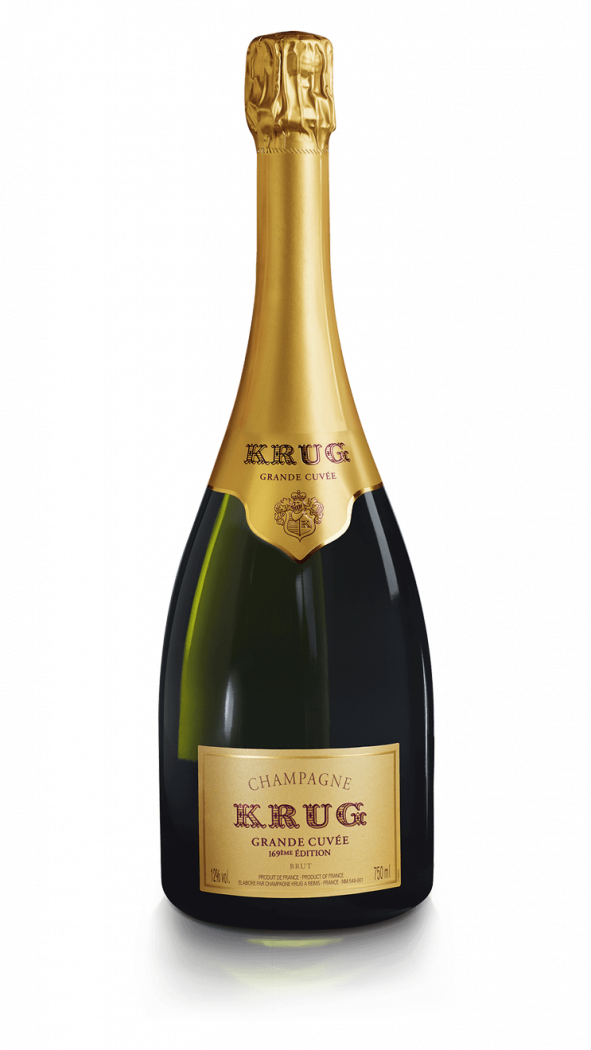
NONVINTAGE BRUT
REIMS
$400 REGULAR BOTTLE (750ML) $200 HALF BOTTLE (375ML)
Krug Champagne is a Champagne house founded by Joseph Krug in 1843. It is based principally in Reims, the main city in France’s Champagne region and is one of the famous Champagne houses that formed part of the Grandes marques. Today the house is majority owned by the multinational conglomerate LVMH Moët Hennessy – Louis Vuitton S.E. whose portfolio includes other well-known wine brands such as Moët & Chandon, Veuve Clicquot, Château d’Yquem and Ruinart. Despite LVMH’s majority ownership, the Krug family is still actively involved in all the key decisions of the house but does not manage the day-to-day operations.
TASTING NOTES
Wonderful precision and depth right away on the nose, with dried pineapple, light apricot and hints of flint and slate. Medium-bodied palate that’s firm, bright, and linear. Vivid,driven acidity adds focus and perfection. Dried lemon and a wonderful, creamy texture with a mineral undertone. Extremely long, almost endless sophistication here.
MOET & CHANDON ‘IMPERIAL’ $24 SPLIT BOTTLE (187.5ML)
NONVINTAGE BRUT
REIMS
Moët & Chandon French pronunciation also known simply as Moët, is a French fine winery and co-owner of the luxury goods company LVMH Moët Hennessy Louis Vuitton SE. Moët et Chandon is one of the world’s largest champagne producers and a prominent champagne house. Moët et Chandon was established in 1743 by Claude Moët, and today owns 1,190 hectares (2,900 acres) of vineyards, and annually produces approximately 28,000,000 bottles of champagne.[2]
This should really be a go to for anyone celebrating or anyone wanting a glass of bubbles. Always offer this when they order the Grandial please. 2 splits is like a glass each for a 2 top and adds 50 dollars to the tab.
TASTING NOTES
Well balanced, this Champagne, even with its enormous production, remains a benchmark and is always enjoyable. In this bottling, ripe white fruit is cut with citrus, with an edge of toastiness that gives complexity.
PIPER HEIDSIECK ‘SAUVAGE’ $135

NONVINTAGE ROSÉ
CHAMPAGNE
Piper-Heidsieck is a Champagne house founded by Florens-Louis Heidsieck on 16 July 1785 in Reims.[1] Heidsieck joined with Piper in October 1839. In the late 1980s, Piper-Heidsieck became part of the Rémy Cointreau wine and spirits group.[2] It was sold in 2011 to Européenne de Participation Industrielle, a privately owned holding company of French luxury brands.[3]
TASTING NOTES
Lightly toasty and set on a fine, satiny texture, this vibrant, deep-hued rosé layers rich accents of toasted brioche and roasted walnut with lively flavors of raspberry puree, wild cherry, blood orange zest and ginger.
Laurent Perrier ‘Cuvee Rosé’

NONVINTAGE ROSÉ
CHAMPAGNE
Laurent-Perrier is a Champagne house founded in 1812. It is the main company of the Laurent-Perrier Group, whose other flagship brands include the houses of Salon, De Castellane and Delamotte.[1] Laurent-Perrier Group also acquired Chateau Malakoff as of 2004.[2] With over 1,200 grape growers with supply contracts, Laurent-Perrier exports to more than 120 countries.
TASTING NOTES
Fragrant wafts of smoke and spice accent the steeped raspberry and mandarin orange peel flavors of this tightly meshed rosé Champagne, which is backed by a vivid spine of mouthwatering acidity and is silky on the palate, with hints of dried herb, licorice and toasted almond playing on the finish.
MOET & CHANDON ‘IMPERIAL ROSÉ’ $65 HALF BOTTLE (375ML)

NONVINTAGE ROSÉ
REIMS
Moët & Chandon also known simply as Moët, is a French fine winery and co-owner of the luxury goods company LVMH Moët Hennessy Louis Vuitton SE. Moët et Chandon is one of the world’s largest champagne producers and a prominent champagne house. Moët et Chandon was established in 1743 by Claude Moët, and today owns 1,190 hectares (2,900 acres) of vineyards, and annually produces approximately 28,000,000 bottles of champagne.[2]
TASTING NOTES
Hints of ripe peach, passion fruit and juicy acidity are carried on a tightly knit, satiny mousse in this firm rosé, layered with spiced plum, dried cherry, smoke and star anise notes. Try this with charcuterie.
BESSERAT DE BELLEFON ‘CUVEE DES MOINES’ $60 HALF BOTTLE (375ML)
NONVINTAGE ROSÉ
CHAMPAGNE
The Champagne House Besserat de Bellefon was founded in Aÿ in 1843 by Edmond Besserat. The particularity of the Champagne Besserat de Bellefon is that it is made to accompany the meal : indeed each “qualité” of the Cuvée des Moines are elaborate to go with different dishes. That is why this Champagne is distributed only in hotels, restaurants and wine cellars. The Bubbles of the Champagne Besserat de Bellefon are known to be 30% finer than those in a traditional Champagne.[1] It was acquired in 1971 by the Pernod-Ricard group, and eventually bought by Groupe Marne et Champagne, renamed Lanson International.[2] It is actually owned by the Lanson-BCC Group.
The estate owns 25ha of vineyards, and purchases grapes from 110 communes. The house produces approximately 1,300,000 bottles annually.[2]
TASTING NOTES
With its orange-pink color, this rosé is showing the good results of nearly a year’s bottle age. That has filled out the fresh red fruits and given the lively texture a touch of toast. It is drier than it used to be, a structured and ripe wine that is ready to drink. As with its white counterpart, this Cuvée de Moins Brut is designed as a food wine.
THIS WINE HAS ABOUT ¾ THE STANDARD PRESSURIZATION SO THE BUBBLES ARE SOFTENED AND IT IS ALSO NOT MADE WITH THE SECOND FERMENTATION SO THERE IS NO MALOLACTIC ACID AND IT IS A SOFTER FOOD FRIENDLY WINE.
